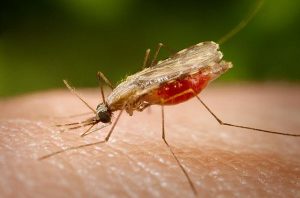World Malaria Day 2013: Invest in the Future: Defeat Malaria
Since World Malaria Day was first instituted in 2007 by World Health Organization Member States, great progress has been made in malaria prevention, detection and treatment. Even so, over half a million people die each year from this disease, many of them children under five years old, with direct costs of the disease estimated to be in excess of $12 billion annually. Today, many countries worst affected by malaria transmission are on track to meet the 2015 World Health Assembly target of reducing incidence rates by more than 75% but continued research and support are vital to keeping this momentum.
Papers published recently in PLOS ONE highlight some of the work being done around the world to reach this goal and sustain the progress that has been made. A case study of Sri Lanka’s malaria program showed how better vector control and surveillance measures can substantially reduce malaria cases, and offers insight for the development of successful disease prevention campaigns in other countries.
In addition to control and detection measures, efforts to develop inexpensive treatments and efficient ways to produce vaccines continue to be important in the fight against malaria. Medicines derived from the extract of the Artemisia plant are widely used in malaria treatment, but in a paper published in PLOS ONE last year, researchers found using the whole Artemisia plant to be effective in malaria treatment in a mouse model. They propose that whole plant treatment may even offer a more efficient delivery mechanism, potentially having broad therapeutic power against many infectious agents and the ability to dramatically reduce treatment costs.
In another study, researchers from University of California, San Diego looked for a way to make safe and effective subunit vaccines less expensive to produce. They tested whether Plasmodium falciparum surface proteins 25 and 28, both powerful malaria transmission blocking vaccine candidates, could be produced on algal chloroplasts. Their work found algae a viable, cost-effective platform for producing malaria subunit vaccines, which could be a promising contribution in making these vaccines available to low-income countries.
These papers and many others support this year’s World Malaria Day theme to “Invest in the Future: Defeat Malaria.” As researchers continue to make strides towards the 2015 Millennium Development Goal to “have halted and begun to reverse the incidence of malaria,” you can read more PLOS ONE research on malaria here.
Citations:
Abeyasinghe RR, Galappaththy GNL, Smith Gueye C, Kahn JG, Feachem RGA (2012) Malaria Control and Elimination in Sri Lanka: Documenting Progress and Success Factors in a Conflict Setting. PLoS ONE 7(8): e43162. doi:10.1371/journal.pone.0043162
Elfawal MA, Towler MJ, Reich NG, Golenbock D, Weathers PJ, et al. (2012) Dried Whole Plant Artemisia annua as an Antimalarial Therapy. PLoS ONE 7(12): e52746. doi:10.1371/journal.pone.0052746
Gregory JA, Li F, Tomosada LM, Cox CJ, Topol AB, et al. (2012) Algae-Produced Pfs25 Elicits Antibodies That Inhibit Malaria Transmission. PLoS ONE 7(5): e37179. doi:10.1371/journal.pone.0037179
Image: Anopheles by James Gathany for CDC

